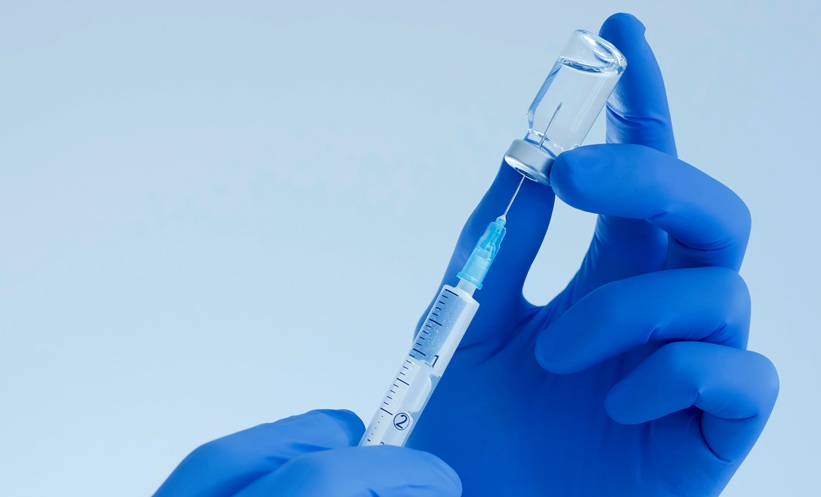Interviewees: Sorena Kiani
Barts Health NHS Trust, London, UK
Disclosure: Kiani has received research support and honoraria and/or consulting fees from BioCryst, Biotest, CSL Behring, KalVista, Pharvaris, and Shire/Takeda.
Acknowledgements: Writing assistance was provided by Caroline Cross, Reading, UK.
Disclaimer: The opinions expressed in this article belong solely to the named interviewee.
Support: The symposium and publication of this article was funded by BioCryst.
Citation: EMJ Allergy Immunol. 2022;7[1]:59-62. DOI/10.33590/emjallergyimmunol/10085440. https://doi.org/10.33590/emjallergyimmunol/10085440.
Interview Summary
Hereditary angioedema (HAE) is a rare but debilitating and potentially fatal disease that presents in various forms, and can be difficult to manage. Its underlying cause is mutations in a gene that, through its protein product, controls production of the tissue enzyme kallikrein and a peptide mediator, bradykinin. The resulting overproduction of bradykinin leads to increased vascular permeability and oedema. Patients experience episodes of swelling that are unpredictable in their timing, location, and severity, and significantly affect quality of life (QoL), both physically and psychologically.
EMJ spoke to Sorena Kiani, Consultant Immunologist at the Barts Health NHS Trust (Barts), London, UK, who manages the UK’s largest HAE patient cohort, ahead of a symposium held at the European Academy of Allergy and Clinical Immunology (EAACI) Hybrid Congress 2022 in Prague, Czechia. He explained how new specific medications to control and prevent HAE attacks, developed in the last decade, are giving clinicians and patients the opportunity to review treatment goals and raise expectations. Three prophylactic medications are now licenced for use and recommended in international treatment guidelines, which effectively prevent future HAE attacks.
Kiani describes clinical and real-world data from UK clinics that demonstrate how berotralstat, the first orally-administered HAE prophylaxis to be licenced, can reduce the number, duration, and severity of HAE attacks, resulting in measurable improvements in patients’ QoL. He also discusses the importance of shared decision-making in developing individualised treatment plans that take into account patient goals and expectations. Kiani is confident that with wider access to prophylaxis, and appropriate monitoring and support, many more HAE patients can expect to live attack-free, with a normalised QoL.
Erratum: Establishing New Standards in Hereditary Angioedema: Improving Outcomes Through Routine Prophylaxis
Interviewee: Sorena Kiana
Original citation: EMJ Allergy Immunol. 2022;7[1]:59-62. DOI/10.33590/emjallergyimmunol/10085440. https://doi.org/10.33590/emjallergyimmunol/10085440.
Date correction published: 12.08.22
In the article by Sorena Kiana in the August issue of EMJ Allergy & Immunology 7.1 (pages 59‑62) the following sentence is incorrect “AECT scores improved significantly from the 3 months prior to treatment (AECT scores: 4.93±3.42) compared with AECT scores at 1–3 months (9.79±4.53 at 1–3 months and 1.03±3.14 at 4–6 months, respectively; n=32–43; p<0.0001).” The sentence should read, “AECT scores improved significantly from the 3 months prior to treatment (AECT scores: 4.93±3.42) compared with AECT scores at 1–3 months (9.79±4.53 at 1–3 months and 11.03±3.14 at 4–6 months, respectively; n=32–43; p<0.0001).”
EMJ apologises for the error and any inconvenience caused.
INTRODUCTION
HAE is a genetic disorder affecting approximately 1:50,000 people worldwide, which causes unpredictable, recurrent episodes of cutaneous or submucosal oedema, affecting mainly the skin, abdomen, or upper respiratory tract. Laryngeal HAE attacks are a medical emergency and asphyxiation can occur, causing death in approximately 1 in 20 cases.1
A majority of cases of HAE are caused by mutations in the SERPING1 gene that encodes the C1 esterase inhibitor (C1-INH) protein. The mutations result in an absence of C1-INH protein or abnormal functioning. Dysregulation of the bradykinin production pathway results, leading to increased vascular permeability and oedema.2 Mutations have been found at multiple points in the C1-INH encoding gene, and the disease manifests as a spectrum with variations in the site, periodicity, and severity of disease in individual patients. Diagnosis is based on serum or plasma levels of C1-INH function, C1-INH protein, and complement factor 4.3
For many years, acute HAE attacks were treated with attenuated androgens. These anabolic steroids have also been used prophylactically to prevent further attacks. However, side effects with these agents are common and significant, including hirsutism, abnormal liver function, and thrombocytopenia.
In recent years, medications that specifically target the kinin–kallikrein pathway in HAE have been licenced, and have been shown to be effective in controlling and preventing attacks.3 New international consensus guidelines3 recommend three licenced medicines that provide effective prophylaxis to prevent HAE attacks. These are C1-INH protein, plasma-derived or recombinant, that replace the deficient C1-esterase inhibitor protein; lanadelumab; and berotralstat. Lanadelumab and berotralstat inhibit, by different mechanisms, the function of kallikrein, a protein involved in the bradykinin production pathway.3
Kiani spoke about the impacts of the updated treatment guidelines, his experiences of managing patients with HAE, and the benefits that new prophylactic approaches can bring to people living with HAE.
MANAGING HEREDITARY ANGIOEDEMA: FROM ACUTE THERAPY TO LONG TERM DISEASE CONTROL
Barts Health NHS Trust manages more than 200 patients with HAE, the largest cohort in the UK, including 40 paediatric cases. Kiani oversees an HAE family clinic at Barts, and explains: “Patients with HAE often experience their first attack during adolescence and, although many children have a parent with the condition, it is thought that up to 20% of patients present without a family history and have de novo mutations.”
Kiani explained disease severity can vary from mild to severe disease, which can range from occasional to multiple attacks every week, making disease management challenging. “There is a wide spectrum of disease severity and also variation in the periodicity of attacks, which makes the condition very unpredictable. Some patients have relatives who have died of asphyxiation, and this can undoubtably cause intergenerational trauma in some cases. It is the unpredictability of the condition that can be so debilitating for patients who just want to be able to live a normal life,” he says.
Currently, there is variation in patient access to treatments between and within countries, from a complete lack of access, to patients benefitting from on-demand medication that can be self-administered as soon as an HAE attack begins. On-demand medication is particularly important for patients who experience frequent attacks, if they are not already receiving prophylaxis. Guidelines recommend that patients carry sufficient medication to treat at least two attacks, to reduce the chance that they run out of on-demand medication.3
Early treatment of swelling episodes can help to reduce the severity and length of attacks.4 However, as Kiani states: “If an attack is left untreated, there is an exponential rise in severity that means it becomes more difficult to treat.” Other patients are at risk of attacks during surgical or dental trauma, where mechanical impact can trigger an attack to the upper airways. This risk can be mitigated by administration of short-term prophylactic medication, such as intravenous plasma-derived C1-INH.3
Kiani believes that more patients can benefit from access to prophylactic treatments to prevent HAE attacks. “Now there are three first line prophylactic therapies licenced, we are moving towards being able to prevent attacks, and more patients can expect to live a more normal life.”
PROPHYLAXIS FOR HEREDITARY ANGIOEDEMA
The 2021 International World Allergy Organization (WAO)/EAACI Guidelines3 recommend use of one of three long-term prophylactic treatments to prevent future HAE attacks, which can be interchanged if response to one is poor. Long-term use of androgens is not recommended as first-line prophylaxis due to multiple potential side effects, including hirsutism and menstrual disorders in females, with multiple contraindications, including other medications such as statins and antidepressants.5
Two of the recommended prophylactic medications are injectable. Plasma-derived C1-INH, administered IV twice-weekly, has been shown to have good, dose-dependent effects in preventing HAE attacks.6 Thromboembolic events are a rare side-effect, and the treatment is generally well tolerated but comes with the burden of injection. The alternative injectable is lanadelumab, a plasma kallikrein inhibiting monoclonal antibody that is typically administered once every two weeks, reducing to once a month for well-controlled HAE. Like C1-INH administration, in many instances, patients on lanadelumab can be trained to self-administer medication, reducing the need for visits to healthcare settings.
Berotralstat is the first oral prophylactic for HAE to be licenced and is a selective inhibitor of plasma kallikrein.7 A randomised, double-blind, placebo-controlled Phase III trial (APeX 2) showed a 44% reduction in rate of HAE attacks compared with placebo (p<0.001) during the 24-week treatment period,8 with improvements continuing up to 48 weeks.9 At 96 weeks of treatment, patients who responded to the medication saw an average reduction of 80% from the mean baseline HAE attack rate per month. The study also showed that individuals switching to berotralstat monotherapy from injectable prophylaxis remained attack-free for more than 80% of the time.10
IMPROVING QUALITY OF LIFE FOR PEOPLE WITH HEREDITARY ANGIOEDEMA
Patients on long-term prophylaxis for HAE require regular monitoring, and the Angioedema Control Test (AECT) is a valuable standardised self-reporting scoring system, in which a score of nine or above indicates well-controlled disease.11
“If a particular prophylaxis is not controlling HAE attacks sufficiently, it is sensible to try an alternative,” reiterates Kiani. In some cases where attenuated androgens are used, liver function may be normal, but the patient is anxious or unable to sleep. “In these cases, one may have to consider other prophylactic medications provided they fulfil the commissioning criteria.” Before the introduction of berotralstat, in the UK at least, these patients would not be eligible for an alternative unless they went on to develop at least two HAE attacks per week (National Institute for Health and Care Excellence [NICE], unpublished data).
In Germany and several other European countries, access to berotralstat is unrestricted. In the UK, berotralstat is licenced for use in patients with HAE 12 years and older, and is now reimbursed on the National Health Service (NHS) for patients who have more than two HAE attacks per month (NICE, unpublished data). This means it is available for the majority of patients eligible for long-term prophylactic treatment.
In a survey of patients with HAE from 12 UK centres, including Barts, 54 patients with HAE receiving daily berotralstat (150 mg)12 completed questionnaires, including AECT, to assess their experiences of taking berotralstat.13 A mixed-effect model analysis of data from the 54 patients showed statistically significant reductions in the number of attacks for Months 1–3 of treatment (6.21±7.07 attacks) and Months 4–6 of treatment (4.54±5.49 attacks) compared with 3 months prior to treatment (12.91±7.94 attacks; n=28–33; p<0.0001). AECT scores improved significantly from the 3 months prior to treatment (AECT scores: 4.93±3.42) compared with AECT scores at 1–3 months (9.79±4.53 at 1–3 months and 11.03±3.14 at 4–6 months, respectively; n=32–43; p<0.0001). Twenty-two patients (40.7%) reported mild side effects, such as abdominal cramps.13
“Our real-world data from UK centres confirms that prophylaxis improves quality of life for most patients by reducing the number of HAE attacks and their severity,”13 confirms Kiani, who emphasises the importance of ensuring management plans are discussed and agreed with patients to support their needs, preferences, and lifestyle.
ACCESS TO MEDICINES AND ONGOING PATIENT SUPPORT ARE KEY TO ACHIEVING QUALITY OF LIFE GOALS
“Shared decision-making between the patient and physician on appropriate prophylaxis is vital to ensure the best outcomes for individual patients with different preferences and quality of life goals,” Kiani asserts. Although some patients may benefit from prophylaxis with drugs such as berotralstat, Kiani says: “In the UK, patients can only be prescribed berotralstat as long-term prophylaxis if they have two or more attacks per month.” This is an arbitrary cut-off and, he argues: ”For some patients, one attack a month can be awful; you can end up being intubated in hospital, and off work for a week or more as a result of a single attack.” These patients could benefit from prophylaxis. Kiani continues: “From a health economics perspective, huge savings could be made if clinicians were allowed to prescribe prophylaxis on a case-by-case basis, without restriction.” Kiani referred to prescribing guidelines in Germany to highlight the benefits. “In Germany, all prophylactic agents are available without restriction, and this gives every patient with HAE the option to receive specific prophylactic treatment if it is clinically recommended.”
From Kiani’s experience, it is also clear that for patients to achieve an ‘attack-free’ norm, healthcare systems must provide regular patient monitoring, reviews and offer psychological support to patients. “At Barts, we offer a helpline with a dedicated member of staff and we aim to respond to every enquiry within 24 hours. We have three specialist nurses who are familiar with HAE, and can talk to patients and reassure them.”
CONCLUSION
The availability of licenced long-term prophylactic treatments to prevent HAE attacks is changing the way HAE is treated, and is giving more patients hope for a future free from debilitating HAE attacks. Kiani believes more can be done to ensure every patient who could benefit has access to the prophylaxis that will help them reach this goal. He also urges providers to consider how they can improve their services to ensure patients feel supported and adhere to their prophylactic medication, and quality of life is normalised for as many patients with HAE as possible.







